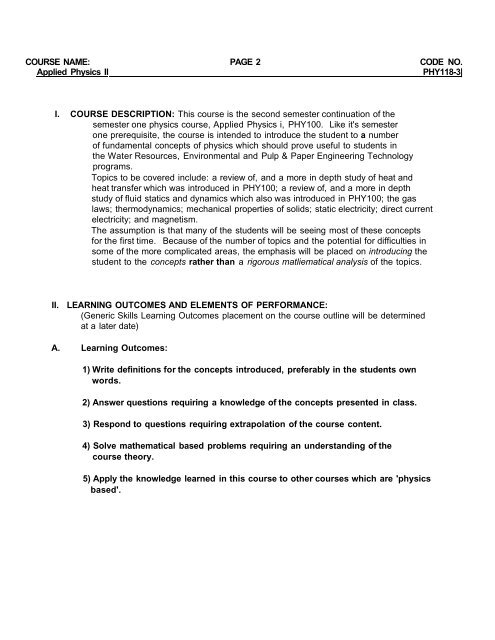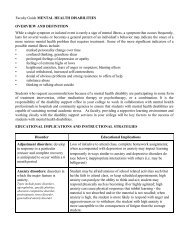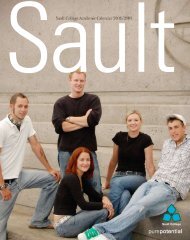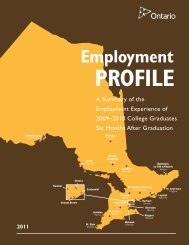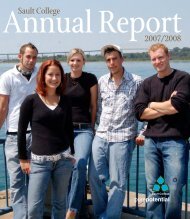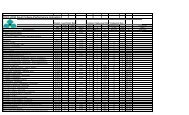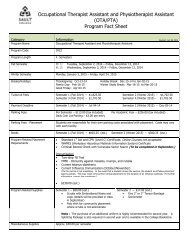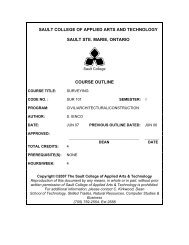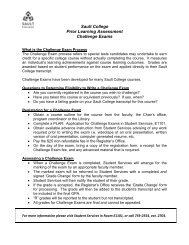PHY118-3 - Applied Physics II Winter 1999.pdf - Sault College
PHY118-3 - Applied Physics II Winter 1999.pdf - Sault College
PHY118-3 - Applied Physics II Winter 1999.pdf - Sault College
Create successful ePaper yourself
Turn your PDF publications into a flip-book with our unique Google optimized e-Paper software.
COURSE NAME: PAGE 2 CODE NO.<strong>Applied</strong> <strong>Physics</strong> <strong>II</strong><strong>PHY118</strong>-3|I. COURSE DESCRIPTION: This course is the second semester continuation of thesemester one physics course, <strong>Applied</strong> <strong>Physics</strong> i, PHY100. Like it's semesterone prerequisite, the course is intended to introduce the student to a numberof fundamental concepts of physics which should prove useful to students inthe Water Resources, Environmental and Pulp & Paper Engineering Technologyprograms.Topics to be covered include: a review of, and a more in depth study of heat andheat transfer which was introduced in PHY100; a review of, and a more in depthstudy of fluid statics and dynamics which also was introduced in PHY100; the gaslaws; thermodynamics; mechanical properties of solids; static electricity; direct currentelectricity; and magnetism.The assumption is that many of the students will be seeing most of these conceptsfor the first time. Because of the number of topics and the potential for difficulties insome of the more complicated areas, the emphasis will be placed on introducing thestudent to the concepts rather than a rigorous matliematical analysis of the topics.<strong>II</strong>. LEARNING OUTCOMES AND ELEMENTS OF PERFORMANCE:(Generic Skills Learning Outcomes placement on the course outline will be determinedat a later date)A. Learning Outcomes:1) Write definitions for the concepts introduced, preferably in the students ownwords.2) Answer questions requiring a knowledge of the concepts presented in class.3) Respond to questions requiring extrapolation of the course content.4) Solve mathematical based problems requiring an understanding of thecourse theory.5) Apply the knowledge learned in this course to other courses which are 'physicsbased'.


